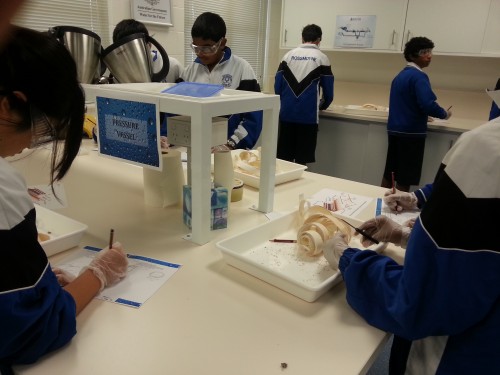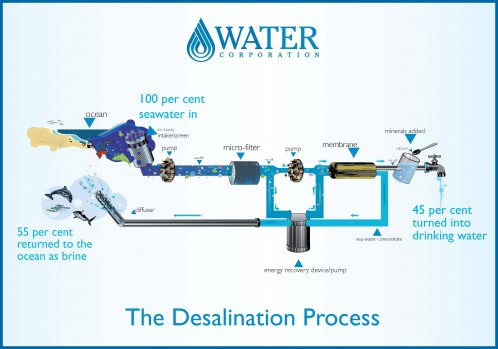Forum > Desalination Plant in Western Australia
Rossmoyne Senior High School28 Jun 2013 04:30 am
As part of our involvement in the USAUSH2O project, our class visited the NCEDA’s Desal Discovery Centre in Rockingham, south of Perth, Western Australia on June 6th. The visit gave us a much better understanding of water use in WA and how the process of desalination works.
When we arrived we were introduced to Warren, who was the guide for our class. Throughout the whole morning we learned so much about water use and conservation. An interesting fact we learnt was that WA uses over 1 gigalitres of water every day and in fact Perth households have the highest water use in Australia – about 276 kilolitres per year. We were also told that of all the water on the planet around 97% is salty. Only 0.75% is freshwater available for us to use.
We also learnt about the two methods to desalinate water: reverse osmosis and distillation. Much to our enjoyment, we watched a short 3-D animation based on the desalination of water. After that we conducted an experiment in the laboratory. This consisted of dissecting a reverse osmosis membrane that separates freshwater from salty water.
We were allowed to look around the centre where we saw different types of machines, many of which were being used in various research projects to further improve our water conservation efforts.
Overall, it was an amazing experience that definitely will not be forgotten by the class!

Rossmoyne Senior High School23 Jul 2013 02:41 am
Western Australia is having trouble coping with the low winter rainfalls. The Water Corporation is now applying different bans and different rules to try and reduce water usage in WA. We are now moving towards desalination as a new way to get fresh water. Desalination is the process of separating freshwater from salty or brackish water. There are two different types of desalination. One of them is thermal and the other is reverse osmosis.
Reverse osmosis is an energy efficient way to separate water form salty or brackish water. (Recycling wastewater involves a lot more than just reverse osmosis – reverse osmosis is right at the end of the process.) Pressure is applied to the salt-water side to counter-act the natural osmotic pressure. The non-purified water is then pushed through leaving the larger salt molecules on one side and the smaller water molecules on the other. (Reverse Osmosis is not filtration)
Thermal Desalination uses vacuum pumps to create low pressure (not all thermal desalination do this … check out www.memsys.eu to learn more about the process) and boils it at temperatures roughly at 8-10 (50-85 for the unit we saw) degrees Celsius (46-50 degrees Fahrenheit). Cold water is then pumped around the water vapour, which cools and becomes water once again.
Some detail of the desalination process can be seen in the accompanying diagram (courtesy of the Water Corporation).
By Seharsh and Hong

USAUS-H2O12 Sep 2013 07:24 am
Thanks Rossmoyne Senior High School (Western Australia) for these posts! How bout other schools? Those of you who also live in similarly salty environments? What desalination processes do other communities use?
You have to log in to reply.








